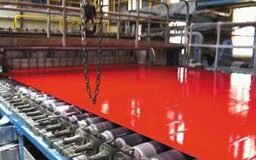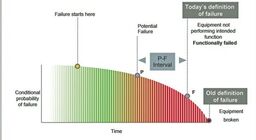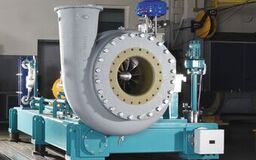Tissue Markets: Trends That Will Shape the Next Five Years
To say that global geopolitical, trade flow, and economic structures are stressed would be an understatement. Over the course of the last two years, a heightened sense of uncertainty has permeated our lives and the markets we depend on, though there are shimmers of light and reasons to be hopeful about the future.
One segment of the pulp and paper industry that continues to rapidly evolve is tissue and towel. There has been some reshuffling and settling since the onset of the pandemic in 2020, and society seems determined to return to normalcy — whatever that may look like. The global tissue sector also looks drastically different than it did in 2019. Before looking at the trajectory of the tissue and towel sector and various factors that could impact it going forward, here are five interesting facts about the current state of the global tissue and towel.
- Global tissue is a roughly 60 million market, which is about 10-15 percent of the global pulp and paper market. As illustrated in Fig. 1, Asia now accounts for almost half of the world’s tissue machine capacity.
- Population and urbanization drive tissue production. Figure 2 illustrates the top tissue producing countries. China’s capacity is much larger than the next several countries combined; the United States is also a very important tissue producer, with about half of China’s capacity.
- Tissue is a “local” business. This means that most regional tissue production stays close to home (versus other grades such as market pulp and containerboard, which are routinely shipped to far away markets). More than 95 percent of North American and European tissue production stays in their own markets.
- New investment in tissue has been driven by Asia, which accounts for 70 percent of total global new machine capacity since 2010. Figure 3 illustrates new capacity by machine build year and provides an indication of where capital has been flowing. Asian investments have been mostly in China, which has now resulted in a significant overhang.
- The US is unique regarding the high share of advanced technology machines in tissue production — comprising 90 percent of the world’s market for TAD, NTT, etc. This is because US consumers prefer and demand higher-end tissue products that are soft and absorbent.
Now, let’s narrow it down a bit and look specifically at the North American tissue market and some of the trends that will shape this market in the future.
NA OVERVIEW
The current North American tissue market is at about a 10-million-ton value, with net imports (excluding the US and Canada) at about 480,000 tons. When looking toward the future, we expect the market to grow by roughly 1 percent over the next year.
Within the North American tissue segment, approximately one-third of the market is made up of private label share. Figure 4 shows the top 10 North American producers by capacity, and it’s interesting to note that the top three companies account for about 50 percent of total capacity.
TRENDS TO WATCH
Trend prediction is risky business today, as uncertainty may be more pronounced now than it has been in several decades. Between the unexpected global pandemic we experienced over the last two years and the first major European land war in 70 years, trend predicting isn’t as reliable as it once was. However, the antidote to uncertainty is scenario planning — identifying risks, addressing them, and finding the underlying truths that are likely in most scenarios.




Before we scenario plan, we must identify the risks by asking critical questions, such as:
Will capacity (especially in private label) create a bubble? Figure 5 illustrates North American announced tissue and towel capacity and the expected demand. Assuming North America as a whole grows at about one percent, we can compare the expected demand with the announced capacity, and what we see is the likelihood of an expanding gap between capacity and demand as announced capacity is exceeding gross demand. Of course, since Fig. 5 reflects announced capacity, it is altogether possible that we will see additional announcements two or three years from now.
When we dive deeper and look a bit closer at the details, we can see that a significant amount of new capacity over the five-year period will come from companies that focus largely on the private label market.
Will private label market demand grow enough to absorb all of the new capacity? Let’s examine three factors that will impact the direction of this growth:
- Costs: Figure 6 outlines a cost curve (supply curve) at the case level. Using data from FisherSolve, we can adjust for differences in advanced and conventional pressing. When applied, we can see that private labels can be low cost and cost competitive as half of 1st and 2nd quartile consumer advanced non-integrated mills are private label.
- Quality: A recent North Carolina State University (NCSU) published tissue study compared the shelf price and absorbency of consumer paper towel. The results showed that private labels can compete on the shelf in terms of quality compared to national brands. However, the question remains: will towel consumers pay 60-80 percent more for 10-20 percent more absorbency?
- Inflation: Inflation is eroding consumer spending power, which has historically been a tailwind for private label brands. Our FisherSolve data indicate that US real wages for all wage earners dropped 12 percent in Q3 2021 compared to Q2 2020.



However, this is all just a small part of the story. Private label capacity is growing fast and fragmenting — another trend to keep an eye on.
Another important dynamic that is just as critical, and that is often overlooked, is the share of private and public ownership. Looking at the decline in public company ownership and what that tells us about capital return expectations has extremely important strategic implications. When investing, public companies tend to want a shorter ROI, whereas private companies, such as Pratt and Georgia Pacific, don’t mind a longer ROI. This is a major factor into why recent new tissue growth is occurring within private companies.
WHAT ROLE DOES CARBON PLAY IN ALL OF THIS?
Whether voluntary or mandatory, carbon will increasingly be a cost for producers. We’ve already seen big brands set net-zero goals that are being backed with big investments — plus demands that their suppliers help them meet reduction targets. We’ve also seen carbon legislation in various forms that has been introduced in several regions, which is creating new opportunities for the industry to take advantage of the significant shift in views on the environment.
Figure 7 illustrates North American tissue greenhouse gas (GHG) emissions by mill. There are significant differences in the amount of carbon emitted between various US tissue producers. Mills emitting the least amount of GHG are advantaged within the industry, whereas those toward the right side of the curve face a serious risk.
Overall, the North American tissue market is very likely to see a cycle of surplus capacity in the coming years; however, pressure will vary by tissue segment and channel. Even though exogenous factors such as COVID-19, the Russia-Ukraine war, and inflation are creating more uncertainty, there are some things we are fairly certain about: low-cost producers in private labels who can compete will gain share; the prospect of reduced consumer spending power will be a tailwind; and carbon costs will become more widespread in the next five years, creating a major opportunity for owners that can proactively articulate their story.




